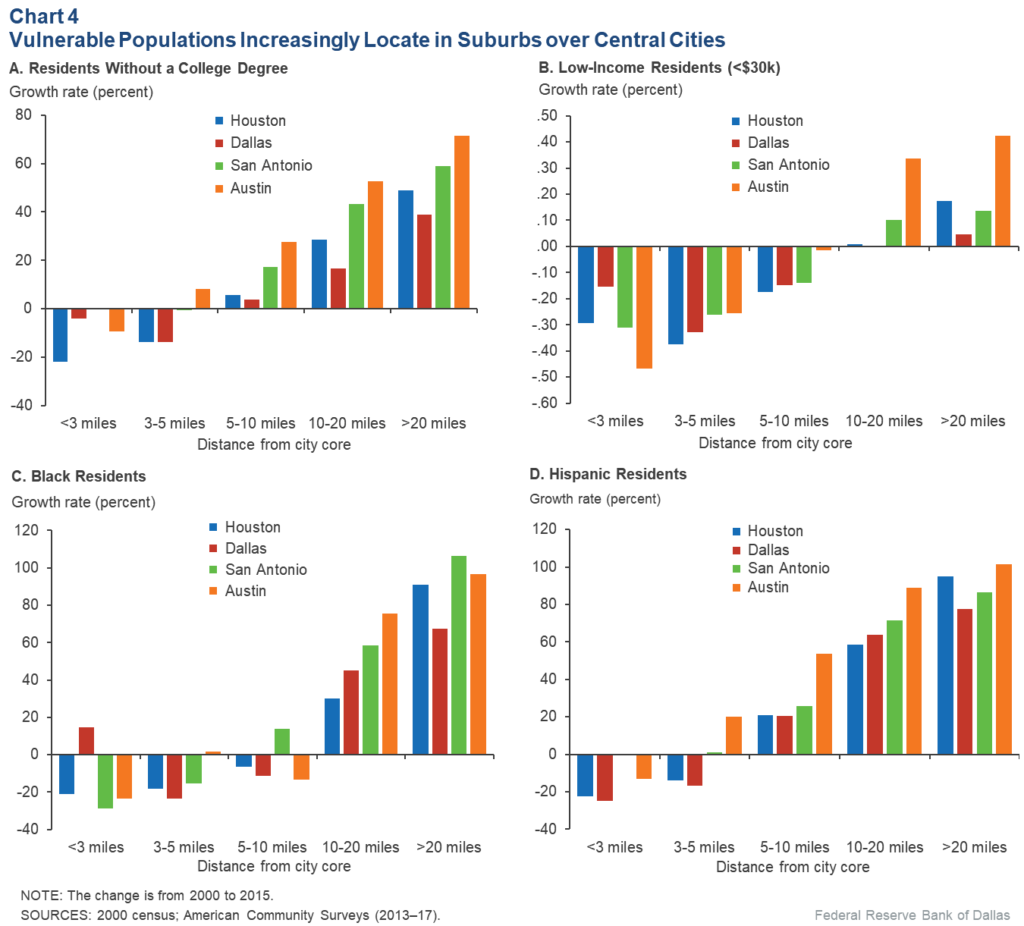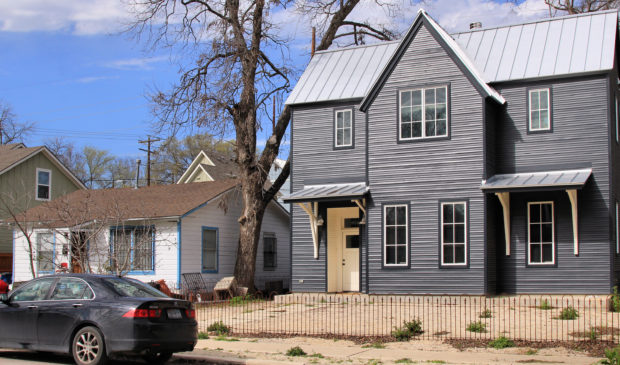Austin neighborhoods facing gentrification pressures, Dallas Fed finds
Thursday, January 16, 2020 by
Chad Swiatecki Recent analysis on incomes and migration patterns in Texas shows that Austin and three other Texas metro areas – Dallas, Houston and San Antonio – have seen significant patterns of gentrification in recent years. The recently released research by the Federal Reserve Bank of Dallas shows that incomes and education levels have greatly increased in the areas closest to city centers, which over the past decade have grown more desirable and caused housing prices to increase, pushing out longtime residents as a result.
The study also found that populations of non-Hispanic whites living three miles or less from a city center are increasing in all four cities, with those populations dropping considerably in suburban areas located five miles or more from a city center.
Economist Yichen Su wrote in the analysis that the influx of higher-wealth residents into central areas brings more quality-of-life options in their wake with displaced residents facing longer commutes and other challenges.
Many of the findings bolster the claims of local activists in recent years, with multiple studies suggesting a variety of options to combat displacement.
Nefertiti Jackmon, a former co-chair of the city’s Anti Displacement Task Force and current program manager for the Neighborhood Housing and Community Development Department, said the economic forces fueling displacement erode a city’s cultural fabric by pushing longtime residents away.
“For many people it’s forced because it’s a decision they have to make,” she said “City centers have become more attractive because they’re safer and have more amenities, and those are things that people who lived there have always wanted but weren’t there until those black and brown populations were forced to move. It creates a huge impact on the cultural fabric.”

Jackmon said the city’s strategies to reduce displacement include rental assistance programs – with a $750,000 contract currently out for proposals – and a tool to aggregate affordable housing options to make make searching for housing easier. She said the city also recently closed its application process for a $350,000 grant program created to encourage community development corporations to create more affordable housing.
While officials from the city and Travis County have partnered in recent years to bolster workforce development programs and increase the earning power of working-class locals, Jackmon said even middle-income households are feeling the effects of Austin’s growth in median incomes and housing costs.
“Workforce development is not the answer because there are people who are making in the range of $60,000 and above and they are having a difficult time being able to stay in place and live in city centers,” she said. “We cannot pay our way out of this problem and I think it’s definitely more housing supply for sure, and with Austin being a primarily renters’ market we are looking at ways to increase stabilization for renters.”
Brian Kelsey, an economic analyst and researcher for the Capital of Texas Media Foundation (the Austin Monitor’s parent organization), said the Austin market is dealing with slow building growth meeting increased demand from more than one-third of Austin households earning more than $100,000 per year.
“When you look at the earnings differential between well-educated bachelors plus workers and everybody else and how much house they can afford and the preference for living more central, it’s not surprising to have these kind of findings,” he said. “Austin is facing a perfect storm when it comes to affordability challenges. It’s among the fastest-growing economies in the country, is attracting higher-earning very well-educated people … and people will be shocked at how wealthy the city has become.”
In recent years displacement concerns have become part of the larger conversation around the creation of a new Land Development Code for the city. The current draft calls for increased housing density near transit zones as one remedy for affordability, though many neighborhood groups have argued there’s not sufficient data to support that approach.
Dave Sullivan, a local planner and former member of the city’s CodeNEXT advisory group, said the city will have to take steps related to planning and building practices to make an impact on home prices and slow displacement.
“Supply is a necessary but not sufficient solution to the demand. As well as supply you need things like incentives to create smaller units and incentives to make those units closer to workplaces to cut down on transportation costs,” he said.
Photo by Larry D. Moore [CC BY-SA 4.0].
The Austin Monitor’s work is made possible by donations from the community. Though our reporting covers donors from time to time, we are careful to keep business and editorial efforts separate while maintaining transparency. A complete list of donors is available here, and our code of ethics is explained here.
You're a community leader
And we’re honored you look to us for serious, in-depth news. You know a strong community needs local and dedicated watchdog reporting. We’re here for you and that won’t change. Now will you take the powerful next step and support our nonprofit news organization?










